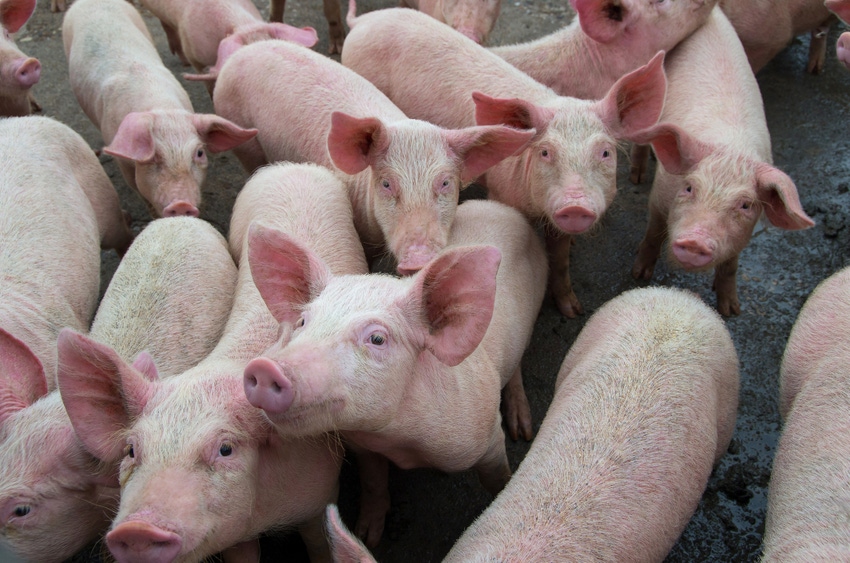Pork prices expected to rise again after selling state and commercial reserves.

By Bloomberg News
There’s less than three weeks to go until China rings in the Lunar New Year, but policy makers counting on the annus horribilis for pork to be over may be in for a shock.
Chinese government leaders have gone on the offensive to bring down boiling hot pork prices, buying the most ever from abroad and releasing thousands of tons from state reserves. That’s started to work, with prices sliding last month from record levels -- just in time for the new year celebrations on Jan. 25.
But this drop is set to be fleeting, analysts warn. African swine fever, the disease that’s gutted the nation’s pork industry, is still spreading, while the rush to sell from reserves means that stockpiles are likely almost empty, they said. Farms are also too scared to restock their hog herds, which means the country’s pork shortage will probably continue for a second year, they said.
“We expect pork prices to continue their rally after the holidays,” said Pan Chenjun, a senior livestock analyst with Rabobank in Hong Kong. “The drop is only temporary.”
The government began its campaign to cool surging prices more than six weeks ago, aiming to temper the market before the Lunar New Year, the country’s most important holiday and peak pork consumption season. The meat is a must for Chinese people during this time, with popular dishes including Jiaozi, a dumpling that is traditionally served on New Year’s Eve and is typically made from ground pork.
The commerce ministry has been releasing pork from state reserves every week since Dec. 12, delivering about 190,000 tons into the market so far. That’s caused a frenzy among some of the public, with shoppers in the southwest province of Guizhou snapping up the frozen pork in less than an hour, local media reported.
To Slaughter
As well as selling pork from state and commercial reserves, China also boosted hog slaughter rates to try to raise supplies for the holiday, Vice Agriculture Minister Yu Kangzhen said at a press conference on Wednesday. Hog farms slaughtered 14% more in December from a month earlier, the first increase since August, Yu said.
“The festival is too important, and the government has to make sure there will be enough supplies by frequent releases of its reserves,” said Pan.
The strategy has worked somewhat, with wholesale pork prices down 16% by the end of December. But that follows a 110% year-on-year gain in November to record levels that also saw consumer inflation surge to a seven-year high.
The supply deficit is likely to worsen after the Lunar New Year holidays, especially between February and April, as many farms were asked by the authorities to slaughter their pigs for the festival, said Lin Guofa, a senior analyst with a Beijing-based agriculture consulting firm Bric Agriculture Group.
“Prices have been brought under control” after boosting supplies in the short-term, Lin said. However, the government has used up almost all of its reserves, leaving the government less leverage over prices, he added.
More, More, More
To refill its state reserves, China is likely to continue increasing imports, particularly from the U.S. where shipments could grow by 20%-30% in the first half of this year, Rabobank’s Pan said. Purchases from the U.S. have already surged, while total pork imports soared 151% from a year earlier to a record 229,707 tons in November, customs data showed.
Still, Beijing has said that all the pork traded in the world isn’t enough to plug China’s voracious appetite for the meat, and local producers need to do more to increase output. But that’s going to be a challenge, with farmers scared their herds could be wiped out again in a second contagion, Rabobank’s Pan said. Swine fever outbreaks, which tended to be contained more to the north of the country, have been increasing in the south, further worrying farmers, she said.
Outbreaks of the African swine fever will continue to challenge the pork industry, Vice Minister Yu said. The virus has contaminated large swathes of farms in the country and risks could be high given the quick recovery in domestic hog breeding, he said.
While the industry grapples with the outlook for pork, it’s already too late for some consumers who can’t afford to pay for the meat at these elevated levels.
Zhi Xueping, a housewife in her 60s in the city of Suzhou, loves to eat salted pork during the festivities, but that’s off the menu now. Strips of preserved pork that are usually seen hanging in her neighbors porches to dry before Lunar New Year were notably absent this year.
“We need pork, even with the high prices,” said Zhi. “But we’ll have to eat less this year.”
To contact Bloomberg News staff for this story:
Niu Shuping in Beijing at [email protected]
To contact the editors responsible for this story:
Anna Kitanaka at [email protected]
Atul Prakash
© 2020 Bloomberg L.P.
About the Author(s)
You May Also Like



